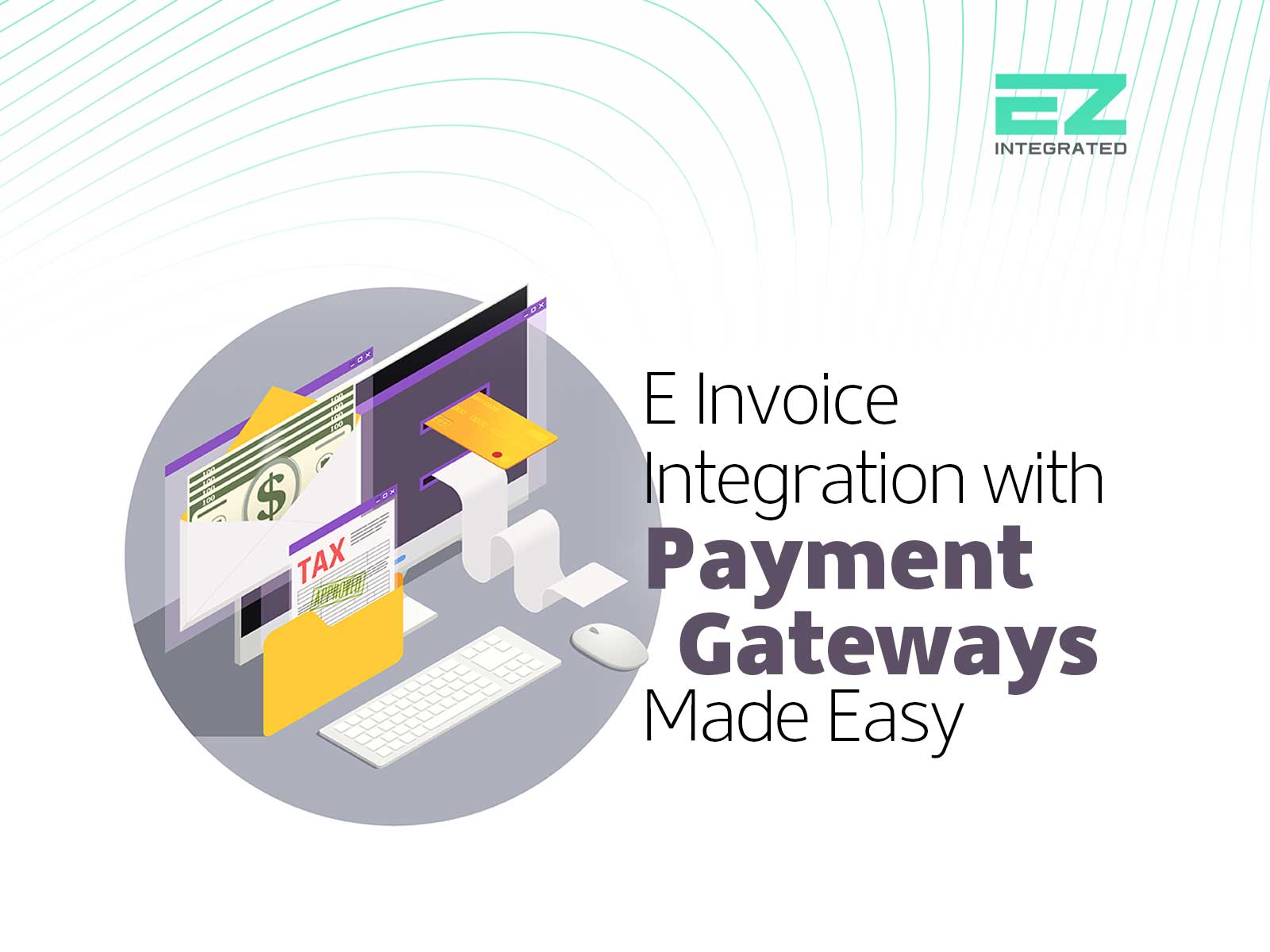Effective payment gateways integration with e-invoicing is a game-changer for businesses. It streamlines transactions, reduces manual errors, and accelerates payment collection.
In this guide, discover how to implement seamless integration, its key benefits, and practical solutions to common challenges.
What Is Payment Gateways Integration for E-Invoicing?
Payment gateways integration for e-invoicing refers to the seamless connection between an electronic invoicing system and an online payment platform. This enables businesses to issue invoices and collect payments automatically without manual data entry.
With this integration, businesses can send digital invoices that include a direct payment link. Customers can instantly pay using various methods, such as credit cards, bank transfers, and digital wallets, streamlining the payment process.
Key Benefits of Payment Gateways Integration for E-Invoicing
Integrating e-invoicing with payment gateways is not just about automation. It also reduces accounting errors, ensures tax compliance, and saves time and effort. Here are some major benefits:
1. Faster Cash Flow and Revenue Collection
Sending an e-invoice with a direct payment link allows customers to settle payments instantly. This minimizes payment delays and improves the company’s cash flow.
2. Reduced Accounting Errors
Automated payment gateways integration eliminates human errors from manual data entry, making financial reconciliation between invoices and incoming payments more accurate.
Also read: API Integration, Streamlining E Invoice Solutions and Tax Compliance
3. Enhanced Customer Experience
Customers appreciate the convenience of paying their invoices using their preferred payment method. This improves customer satisfaction and brand loyalty.
4. Better Tax Compliance
Seamless payment gateways integration ensures that all transactions are recorded automatically. This helps businesses comply with regulatory requirements and generate accurate tax reports.
5. Time and Effort Savings
By automating invoicing and payment processing, businesses can reduce the time spent following up on overdue payments and managing recurring billing.
How to Integrate E-Invoicing with Payment Gateways
To ensure a smooth financial workflow, follow these steps for effective payment gateways integration:
1. Choose the Right Payment Gateway
Selecting a reliable payment gateway that supports popular payment methods is crucial. Some well-known global payment gateways include:
– PayPal
– Stripe
– Authorize.Net
– 2Checkout
For businesses in Saudi Arabia, popular payment gateways include:
– Moyasar
– HyperPay
– STC Pay
– PayTabs KSA
2. Verify E-Invoicing Compatibility
Some payment gateways offer built-in e-invoicing solutions, while others require payment gateways integration through APIs. Ensure the gateway supports e-invoicing before making a choice.
3. Use APIs for Seamless Integration
Most payment gateways provide APIs that facilitate integration with e-invoicing systems. Developers or service providers can help with:
– Automatically generating e-invoices when a new order is placed.
– Tracking payment status and updating invoices in real time.
– Sending automatic payment confirmations to customers.
4. Connect Your Invoicing System with Accounting Software
If you use accounting software like Xero or QuickBooks, integrating it with your payment gateway ensures seamless financial updates once payments are processed.
5. Test the Integration Before Deployment
Before launching the full integration, conduct thorough testing to ensure all processes function smoothly, including:
– Sending e-invoices to customers.
– Processing payments successfully.
– Updating invoice status after payment.
– Sending notifications to all relevant parties.
Common Challenges in Payment Gateways Integration for E-Invoicing
Understanding potential challenges in payment gateways integration helps ensure a secure and efficient process. Here are some key challenges and how to overcome them:
1. Technical Complexity
Setting up payment gateways integration can be technically complex, especially without development expertise. Hiring an experienced developer or using pre-built integration solutions can simplify the process.
2. Currency and Transaction Fees
Businesses serving international customers may face issues with currency exchange rates and transaction fees. Choosing a payment gateway that supports multiple currencies with competitive fees is advisable.
3. Security and Data Protection
Ensure your payment gateway and invoicing system comply with security standards like PCI DSS. This protects customer data and transactions from fraud.
Also read: How E-Invoicing Solutions Maintain Data and Information Security
A Practical Example of Payment Gateways Integration for E-Invoicing
Imagine you own an online store selling digital products and use an e-invoicing system. With payment gateways integration, the process works as follows:
– A customer adds a product to the cart and proceeds to checkout.
– The system automatically generates an e-invoice containing the order details and a payment link.
– The customer receives the invoice via email or SMS.
– By clicking the payment link, the customer completes the transaction via the selected payment gateway.
– After successful payment, the invoice status updates to “Paid,” and a confirmation notification is sent.
– The transaction is automatically recorded in the accounting system.
– This automated process simplifies payment collection, improves financial management, and enhances regulatory compliance.
Simplify Your Payment Process with Secure Payment Gateways Integration
Looking for a seamless and secure way to integrate e-invoicing with payment gateways?
With EZ Integrated’s advanced solutions, you can ensure full compliance with local and international standards while streamlining your financial operations.
Contact us today for a free consultation and discover the best integration solution for your business!
